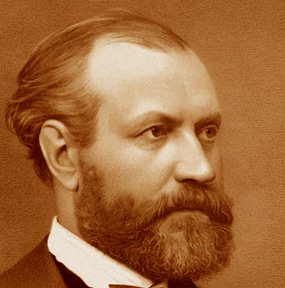
At the time, it was described by various writers as “useless and monstrous”, an object of “barbaric bulk” the “hateful tower” the “belfry skeleton” and a “mast of iron gymnasium apparatus, incomplete, confused and deformed”. The apoplectic writers were of course referring to the Eiffel Tower which was officially opened in Paris on 6th May 1889.
Originally intended as an imposing entrance to the 1889 World’s Fair it has become a cultural icon of France and one of the most recognizable structures in the world. Today, few people realise that this great Parisian monument was intended to stand for only twenty years and was to be pulled down in 1909. Indeed, one of design conditions was that the tower could be easily dismantled. However, it proved so valuable for communications and scientific purposes that it was allowed to remain. It eventually became one of the most-visited monuments in the world. During the course of 2015 for example, nearly seven million people made the ascent to the top.
In the late 1880s many artists and architects deplored the bold design which to sensitive Parisian taste must have seemed avant-garde or even downright ugly. Rather late in the day, a “Committee of Three Hundred” was hastily formed (one member for every metre of the tower’s planned height) and was responsible for a petition published in February 1887. It began:
“We, writers, painters, sculptors, architects and passionate devotees of the hitherto untouched beauty of Paris, protest with all our strength, with all our indignation in the name of slighted French taste, against the erection… of this useless and monstrous Eiffel Tower. To bring our arguments home, imagine a ridiculous tower dominating Paris like a gigantic black smokestack, crushing under its barbaric bulk Notre Dame, the Tour Saint-Jacques, the Louvre, the Dome of les Invalides, the Arc de Triomphe… all of our humiliated monuments will disappear in this ghastly dream.”
This incensed prose was largely a waste of time because the project had been settled months earlier, and the construction of the tower had already begun. Why they left it so hopelessly late to protest is anyone’s guess. However, two of Committee were well-known French composers and as you might expect rather conservative composers at that, Charles Gounod and Jules Massenet.
Charles Gounod (1818-1893): Messe solennelle en L’honneur de Sainte-Cecile. Various soloists, ECOK Oratorio Choir, Netherlands Symphony Orchestra cond. Erik Kotterink (Duration: 49:54; Video 720p HD)
Although Charles Gounod (GOO-noh) evidently objected on aesthetic grounds to Mr Eiffel’s new tower, the composer is best-known for his Ave Maria, a piece that he cobbled together by adding a melody to Bach’s Prelude in C Major, the first piece in Bach’s collection known as The Well-Tempered Clavier. Today such disregard for the original score would be regarded as an act of musical butchery or at the very least, a demonstration of dubious musical taste. Even so, over the years Ave Maria has become a popular instrumental piece for string players because it’s not especially difficult, though I can imagine poor old Bach turning in his grave at every performance.
Gounod wrote a dozen operas, but he was also a prolific writer of songs, piano music and especially religious music, mostly motets and masses. The St. Cecilia Mass is considered one of his finest works and dates from 1855. It pays homage to Saint Cecilia, the patron saint of music and musicians and was first performed in Paris the same year, much to the enthusiasm of music critics. The composer Camille Saint-Saëns was at the first performance and described the music as “like a serene light which rose before the musical world like a breaking dawn”.
Jules Massenet (1842-1912): Méditation from Thaïs. Chanelle Bednarczyk (vln), Stanis³aw Moniuszko School of Music Symphony Orchestra cond. Andrzej Kucyba³a (Bielsko-Bia³a, Poland) (Duration: 07:04; Video 720p HD)
Although historians do not rank Massenet (MASS-ehn-ay) among the handful of outstanding opera “greats” like Mozart, Verdi and Wagner, his operas are now widely accepted. Towards the end of his life though, he was regarded by many as somewhat old-fashioned and unadventurous.
Thaïs (TAH-ees) is an opera set in Byzantine Egypt and was first performed in Paris in 1894. The piece entitled Méditation is an instrumental number which is performed between the scenes of Act II in the opera, but it took on a life of its own and has become one of the world’s great encore pieces. It’s a standard for top violin soloists such as Joshua Bell, Sarah Chang, Anne-Sophie Mutter, and Itzhak Perlman.
This is a lovely performance and the soloist Chanelle Bednarczyk is exemplary, playing with a superb tone and splendid control of dynamics with sympathetic support from the excellent young Polish orchestra. Jules Massenet may have been a bit old-fashioned but he certainly knew how to write a good tune.
 |
 |
 |





